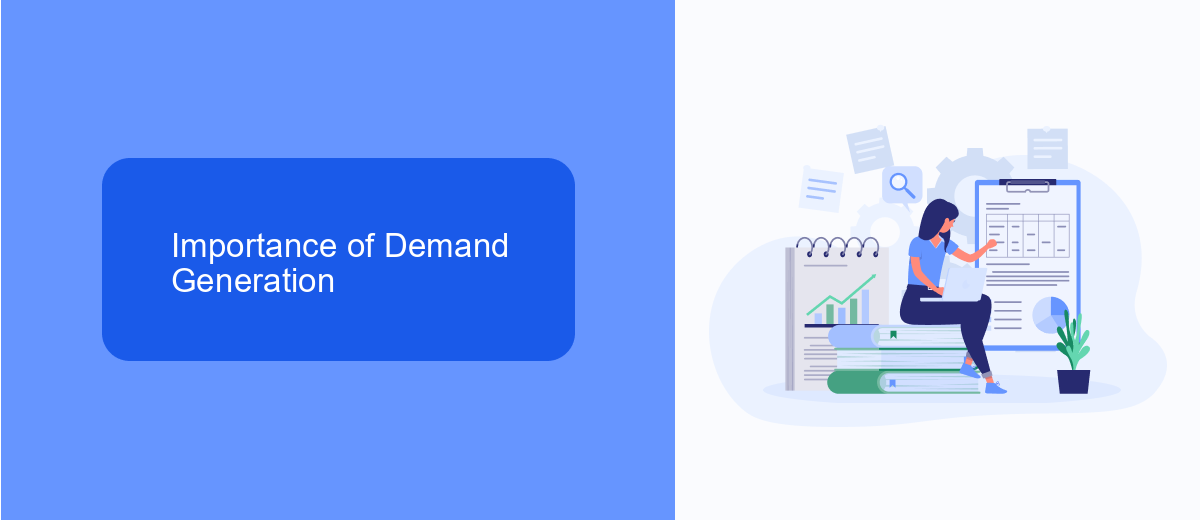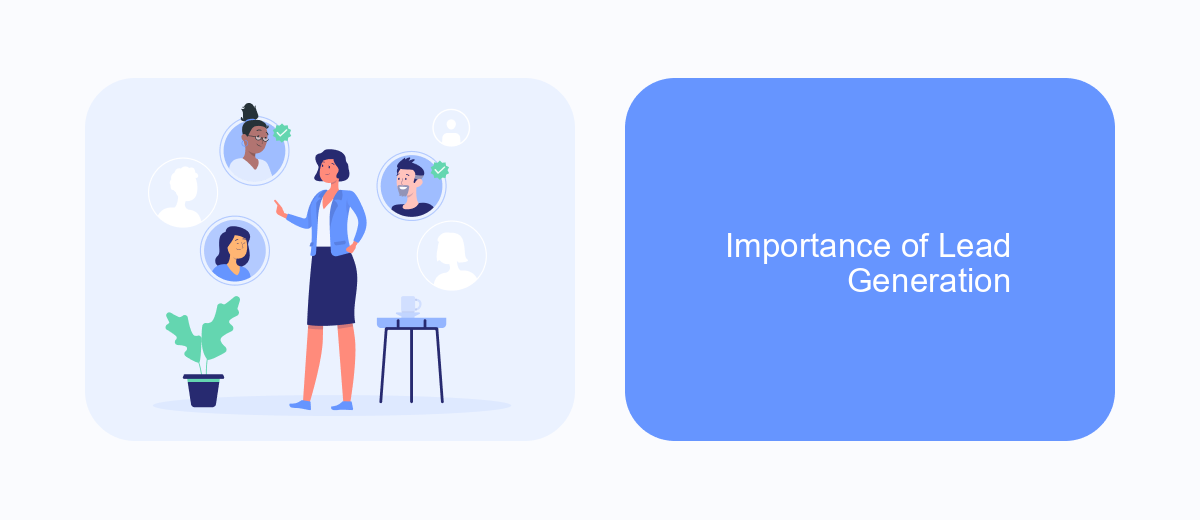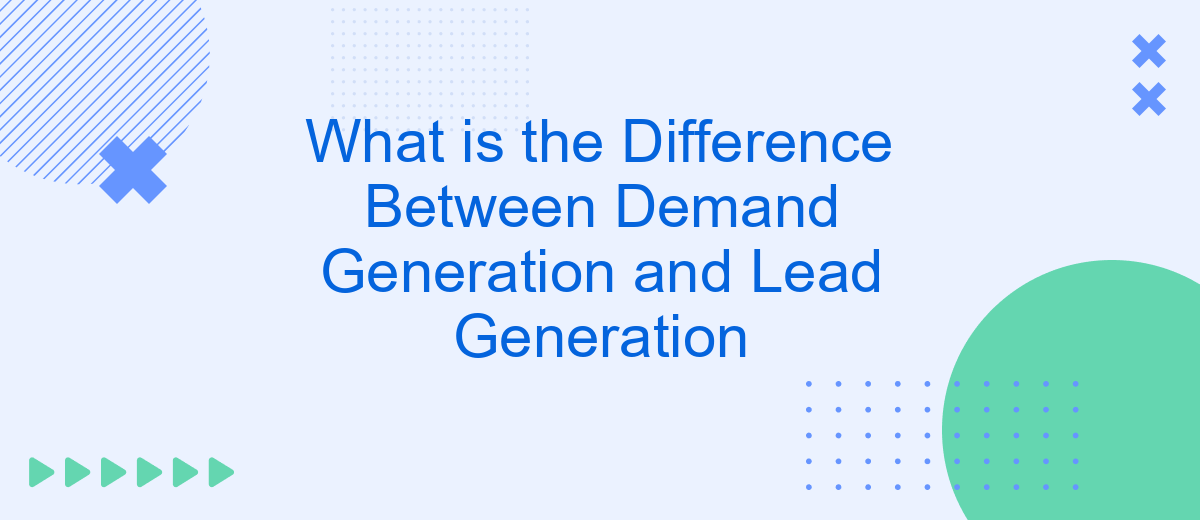In today's competitive business landscape, understanding the nuances between demand generation and lead generation is crucial for effective marketing strategies. While both aim to drive growth, they serve distinct purposes and employ different tactics. This article explores the key differences between demand generation and lead generation, helping you to optimize your approach and achieve better results in your marketing efforts.
Definition of Demand Generation
Demand generation is a holistic approach to creating awareness and interest in a company's products or services. Unlike lead generation, which focuses on capturing contact information, demand generation aims to build long-term relationships and educate potential customers about the value of what you offer. This process involves multiple touchpoints and channels to nurture prospects until they are ready to make a purchase.
- Content Marketing: Creating valuable content to inform and engage your audience.
- Email Campaigns: Sending targeted emails to nurture relationships over time.
- Social Media Engagement: Building a community and interacting with potential customers on social platforms.
- Webinars and Events: Hosting live or virtual events to educate and connect with your audience.
- SEO and SEM: Optimizing your online presence to attract organic and paid traffic.
Effective demand generation requires seamless integration of various tools and platforms. Services like SaveMyLeads can automate the process of connecting different marketing and sales systems, ensuring that your efforts are streamlined and data is accurately transferred. By leveraging such integrations, companies can focus more on strategy and less on manual tasks, ultimately driving more qualified leads into the sales funnel.
Importance of Demand Generation

Demand generation plays a crucial role in any business strategy, as it focuses on creating awareness and interest in a company's products or services. By effectively generating demand, businesses can attract a broader audience, educate potential customers, and nurture them through the buying journey. This proactive approach not only increases brand visibility but also helps build a strong pipeline of qualified leads, ultimately driving revenue growth.
Moreover, integrating demand generation efforts with tools like SaveMyLeads can significantly enhance the efficiency and effectiveness of these campaigns. SaveMyLeads simplifies the process of connecting various marketing platforms, ensuring that data flows seamlessly between them. This integration allows businesses to automate their lead generation processes, track customer interactions more accurately, and make data-driven decisions. As a result, companies can optimize their marketing strategies, improve customer engagement, and achieve better ROI on their demand generation initiatives.
Definition of Lead Generation

Lead generation is the process of attracting and converting strangers and prospects into someone who has indicated interest in your company's product or service. It is a crucial component of a successful marketing strategy, aiming to drive potential customers to your business and nurture them through the buying process.
- Identify target audience: Understand who your ideal customers are and where they spend their time online.
- Create valuable content: Develop content that addresses the needs and pain points of your audience, such as blog posts, eBooks, and webinars.
- Utilize lead magnets: Offer something of value in exchange for contact information, like a free trial or a downloadable guide.
- Implement lead capture forms: Use forms on your website to collect visitor information and turn them into leads.
- Automate lead nurturing: Use email marketing and automation tools to follow up with leads and keep them engaged.
Integrating various lead generation tools and services can streamline this process. For instance, SaveMyLeads simplifies the integration of multiple platforms, allowing businesses to automate lead capture and nurturing without the need for complex coding. By using such services, companies can efficiently manage their leads and focus on converting them into loyal customers.
Importance of Lead Generation

Lead generation is a crucial aspect of any business strategy because it directly impacts the growth and sustainability of a company. By identifying and attracting potential customers, businesses can build a robust sales pipeline, ensuring a steady flow of opportunities for conversion. This process not only boosts sales but also helps in understanding customer needs and preferences better.
Effective lead generation allows companies to target specific audiences, making marketing efforts more efficient. By focusing on qualified leads, businesses can allocate resources more wisely and achieve higher conversion rates. Additionally, lead generation can provide valuable insights into market trends and customer behavior, enabling more informed decision-making.
- Increased sales and revenue
- Better understanding of customer needs
- Efficient allocation of marketing resources
- Enhanced market insights
Integrating lead generation tools like SaveMyLeads can streamline the process by automating data collection and management. This service can help businesses capture leads from various sources and integrate them into their CRM systems seamlessly. By leveraging such tools, companies can focus on nurturing relationships and converting leads into loyal customers.


Key Differences
Demand generation focuses on creating awareness and interest in a company's products or services, often targeting a broader audience. It encompasses a range of marketing activities such as content marketing, social media campaigns, and webinars to build brand recognition and drive engagement. The goal is to educate potential customers and nurture them through the buyer's journey, ultimately leading to increased demand for the offering.
Lead generation, on the other hand, is more targeted and aims to capture specific information from potential customers, such as contact details, through forms or sign-ups. This process often involves tactics like email marketing, gated content, and targeted ads to convert interested individuals into leads. Tools like SaveMyLeads can streamline this process by automating the capture and integration of lead data from various sources, ensuring a seamless transition from interest to actionable leads. While demand generation builds the foundation of interest, lead generation converts that interest into tangible opportunities for sales teams to pursue.
FAQ
What is the primary focus of demand generation?
How does lead generation differ from demand generation?
Can demand generation and lead generation be used together?
What are some common tactics used in demand generation?
How can automation tools assist in lead generation?
Don't waste another minute manually transferring leads from Facebook to other systems. SaveMyLeads is a simple and effective tool that will allow you to automate this process so that you don't have to spend time on the routine. Try SaveMyLeads features, make sure that this tool will relieve your employees and after 5 minutes of settings your business will start working faster.
